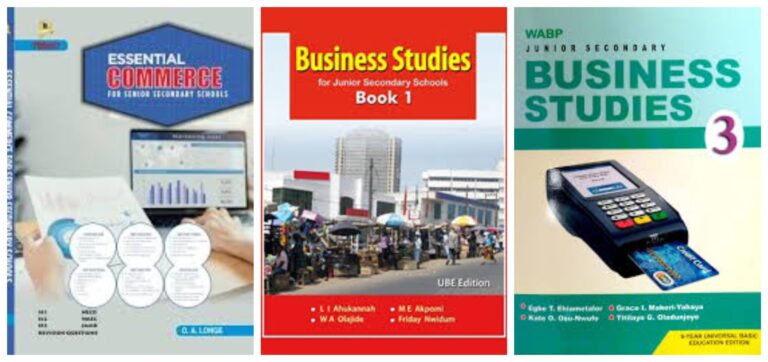For many Nigerian students who passed through secondary school in the early 2000s and even beyond, Business Studies was one of those subjects that laid the foundation for understanding the world of commerce, accounting, and office practices. It wasn’t just a subject; it was a glimpse into the future of entrepreneurship, banking, marketing, and administrative work. And at the heart of these lessons were our well-thumbed, sometimes dog-eared textbooks, filled with diagrams, definitions, and real-life business scenarios.
Let’s take a nostalgic walk down memory lane and revisit some of the most popular business textbooks that shaped our knowledge and, for some, inspired future careers in business and finance.
1. Essential Commerce for Junior Secondary Schools by O. A. Lawal

This was arguably the holy grail of Business Studies in junior school. Published by Tonad Publishers, Essential Commerce broke down complex topics like trade, banking, advertising, and communication in a way that was easy to understand. The diagrams were simple, the definitions were exam-ready, and the questions at the end of each chapter kept students on their toes. If you didn’t know the difference between a wholesaler and a retailer, this book made sure you did by the end of the term.
2. Business Studies for Junior Secondary Schools by R. A. I. Iromantu

This was another staple in Nigerian classrooms, especially in public schools. It covered a wider range of topics under the umbrella of Business Studies; office practice, shorthand, commerce, bookkeeping, and keyboarding. The language was formal but clear, and it came with illustrations of office equipment that some students only saw for the first time in the textbook. It was particularly useful for students who went on to specialise in commercial subjects.
3. New General Business Studies by Egbe Ehiametalor and Partners

This textbook was especially popular in Unity Schools and private schools with a strong commercial department. It combined theory with application, encouraging students to link what they were learning with everyday business activities in their communities. The book’s layout was clean, with plenty of revision questions that often mirrored those found in junior WAEC or NECO exams.
As we reflect on our secondary school years, these books remain a reminder of a time when learning was simpler, but just as impactful.
Which one was your favourite?


